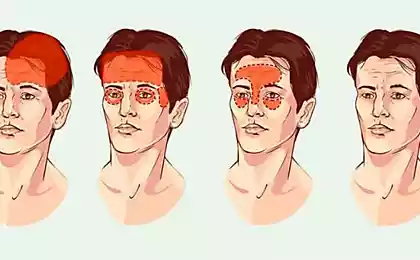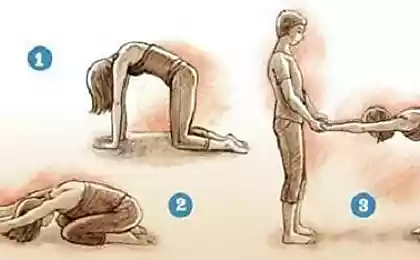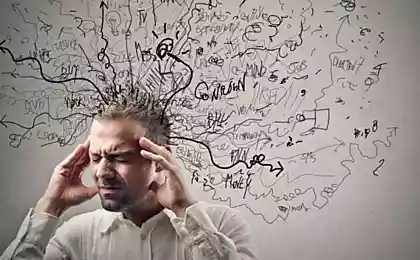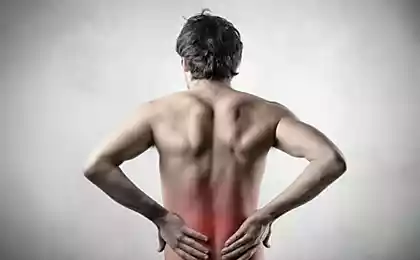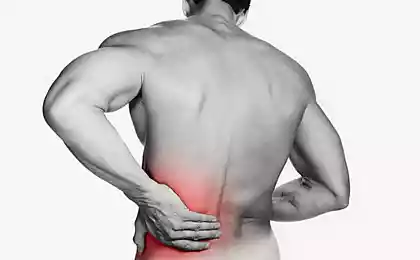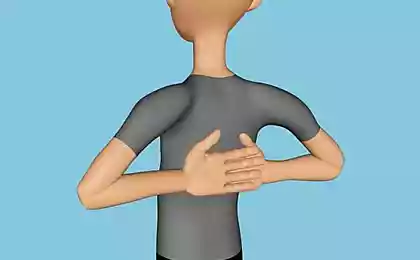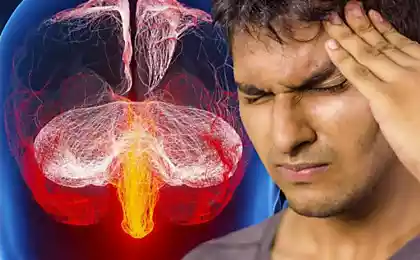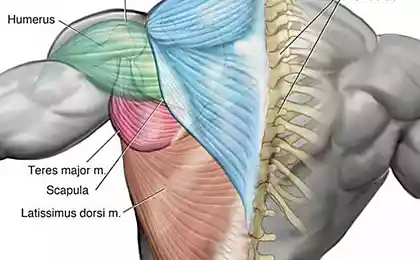709
Stress back pain: the theory of Dr. John Sarno
Psycho-physiological illness is any illness in which physical symptoms are believed to be the direct result of psychological or emotional factors. This diagnosis means that psychological factors either initiated or contribute to back pain or both.
It should be emphasized that even though psychological factors can cause physical symptoms, but the symptoms are not argued for with the help of imaging techniques. However, the real physical problem (like back pain) can be triggered by emotional factors.

The history of the "stress backache"
Dr. John Sarno, MD, Professor, Department of physical medicine and rehabilitation at new York University, has recently popularized the idea of "stress backache", which he calls the "Syndrome of muscle strain" (SNM), although this concept was formulated in 1820, the year.
In the book Dr. Edward Shorter, "From paralysis to fatigue" describes in detail the history of psychosomatic diseases. And in 1820, the year was exhibited a diagnosis like "irritable spine," and is essentially equivalent to the modern idea of stress back pain. The diagnosis of "irritable spine" was quite popular and spread at that time throughout the world .
Interestingly, Dr. shorter expressed the opinion that many doctors and patients of the era began to believe in this diagnosis, although there was no obvious pathology. Dr. shorter said that the doctors laid this diagnosis at the patient's head, increasing fear that serious disease exists and recommended that patients on bed rest.
The diagnosis of "spinal irritation" remained fairly prevalent until the early 1900s. Dr shorter believes that the diagnosis served "needs to remain competitive with other medical clinics by "medicalization" of patients with the presence of certain subjective complaints. He also served the needs of patients, providing the opportunity to "save face" and to have a medical diagnosis, instead focus on the possible psychological and emotional factors, since most patients did not want to recognize the presence of psychological problems.
History the diagnosis of "irritable spine" useful for understanding current medical approaches to back pain. Even now some doctors pay attention primarily on the structural "explanation" for pain in the back, and convince your patient that "diagnostic findings" are a cause of pain, thereby settling the fear in the patient, and then suggest "justifiable" treatment. However, if the true cause of back pain is stress, then active treatment with physical methods may not be effective and cause the patient more stress.
And if you go back to the conceptualization of Dr. John Sarno "pain-related stress", we can see the similarity with the concept of "irritation of the spine ". The most important difference is that Dr. Sarno in the treatment plan places primary causal factors (psychological and emotional) to the fore; while some doctors continue to use only physical methods of treatment.
In particular, the theory of Dr. Sarno's view that in most cases of back pain are treated by the medical community using "organic" approaches are actually associated with stress. It is important to note that this theory and treatment approaches ambiguously accepted in the medical and psychological community, and don't yet have clear evidence obtained through scientific research.
How stress causes back pain?
There are many theories about the causes of back pain associated with stress. It is important to note that the overriding principle of all these theories is that psychological and emotional factors cause certain physical changes and the result is back pain.
In most theories of stress back pain cyclic pain as aggravated, which leads the patient to anxiety and problems with performing daily activities.
Cyclic pain is characterized by:
Of course, this cycle provokes increased pain, increased fear, and even greater physical maladjustment, along with other reactions such as social isolation, depression and anxiety.
The theory of Dr. Sarno
In the formulation of SNM Dr. Sarno, back pain is not associated with mechanical or physical factors, but due to the feelings of the patient, the personality and subconscious issues. Key emotions include unconscious anger and rage. In addition, it describes people who may develop the syndrome of tension in the muscles, as a personality type with these characteristics:
The theory of Dr. Sarno proves that these personality characteristics interact with stressful life situations and this leads to back pain. It is also noted that the source of psychological and emotional stress are not always obvious.
The theory of Dr. Sarno TMS describes a mechanism whereby emotional tension is pushed out of awareness into the unconscious mind. It is an unconscious tension causes changes in the nervous system. Changes lead to narrowing of the blood vessels and reduce blood flow to the various soft tissues, including muscles, tendons, ligaments and nerves of the spine. This leads to a reduction of oxygen and the accumulation of biochemical waste in the muscles. In turn, this leads to muscle tension, spasm and back pain experienced by the patient.
Diagnosis of "stress pain" in the back
The diagnosis of "stress back pain" is often set on the basis of a careful collection of medical history data and physical examination. But patients should be cautious in trying to self-diagnose "stress pain" in the back, as the pain syndrome may be caused by serious disease (e.g., spinal tumor or infection). Full medical examination using the imaging methods, as a rule, allows to exclude more serious structural causes of back pain in most patients.
In cases where back pain is associated with stress, the history of back pain is often quite variable. The pain may occur after a specific incident or appear suddenly. For example, often the pain starts from the incident of stretching the muscles and ligaments, but does not disappear due to the impact of emotional factors, although the muscles and ligaments has already recovered from injury.
In many cases, an MRI study can be detected protrusion or disc phenomena degenerative disc disease, although the actual cause of back pain is stress. In these cases, MRI findings are not clinically significant and, ultimately, these changes are not considered to be the cause of the pain.
The General characteristics of the stress back pain include symptoms such as:
In General, the symptoms of stress pain in the back, similar to those observed in fibromyalgia.
According to Dr. Sarno, the diagnosis of SNM is exposed only when completely ruled out organic causes of pain, and at the same time, there are characteristics of SNM.
The treatment of back pain associated with stress
Just as there are many theories about how stress and other emotional or psychological factors can cause back pain, there are many approaches to treatment. But you can select the basic approach – comprehensive.
With an integrated approach treatment of stress-related back pain is carried out in a more extended plan than the concept of SNM Dr. Sarno.
Using a comprehensive approach, doctors do not always see a clear personality characteristics that are important according to Dr. Sarno, and are not focused on the unconscious anger as the focal psychological problems.
A holistic approach to treatment takes into account various factors: physical, emotional, cognitive, and environmental factors, and aims to impact on all aspects. Thus, the impact of treatment on the following aspects:
Integrated treatment program may include such procedures as:
This combination therapy treatment of back pain used for over 25 years and has proved its effectiveness, although a key factor in treatment outcome is the patient's motivation to undergo the full course of treatment and rehabilitation. published
Also interesting: back Pain: how to relieve an attack with breathing exercises
Back pain: psychosomatic
Source: www.dikul.net/interest/3/37.html
It should be emphasized that even though psychological factors can cause physical symptoms, but the symptoms are not argued for with the help of imaging techniques. However, the real physical problem (like back pain) can be triggered by emotional factors.

The history of the "stress backache"
Dr. John Sarno, MD, Professor, Department of physical medicine and rehabilitation at new York University, has recently popularized the idea of "stress backache", which he calls the "Syndrome of muscle strain" (SNM), although this concept was formulated in 1820, the year.
In the book Dr. Edward Shorter, "From paralysis to fatigue" describes in detail the history of psychosomatic diseases. And in 1820, the year was exhibited a diagnosis like "irritable spine," and is essentially equivalent to the modern idea of stress back pain. The diagnosis of "irritable spine" was quite popular and spread at that time throughout the world .
Interestingly, Dr. shorter expressed the opinion that many doctors and patients of the era began to believe in this diagnosis, although there was no obvious pathology. Dr. shorter said that the doctors laid this diagnosis at the patient's head, increasing fear that serious disease exists and recommended that patients on bed rest.
The diagnosis of "spinal irritation" remained fairly prevalent until the early 1900s. Dr shorter believes that the diagnosis served "needs to remain competitive with other medical clinics by "medicalization" of patients with the presence of certain subjective complaints. He also served the needs of patients, providing the opportunity to "save face" and to have a medical diagnosis, instead focus on the possible psychological and emotional factors, since most patients did not want to recognize the presence of psychological problems.
History the diagnosis of "irritable spine" useful for understanding current medical approaches to back pain. Even now some doctors pay attention primarily on the structural "explanation" for pain in the back, and convince your patient that "diagnostic findings" are a cause of pain, thereby settling the fear in the patient, and then suggest "justifiable" treatment. However, if the true cause of back pain is stress, then active treatment with physical methods may not be effective and cause the patient more stress.
And if you go back to the conceptualization of Dr. John Sarno "pain-related stress", we can see the similarity with the concept of "irritation of the spine ". The most important difference is that Dr. Sarno in the treatment plan places primary causal factors (psychological and emotional) to the fore; while some doctors continue to use only physical methods of treatment.
In particular, the theory of Dr. Sarno's view that in most cases of back pain are treated by the medical community using "organic" approaches are actually associated with stress. It is important to note that this theory and treatment approaches ambiguously accepted in the medical and psychological community, and don't yet have clear evidence obtained through scientific research.
How stress causes back pain?
There are many theories about the causes of back pain associated with stress. It is important to note that the overriding principle of all these theories is that psychological and emotional factors cause certain physical changes and the result is back pain.
In most theories of stress back pain cyclic pain as aggravated, which leads the patient to anxiety and problems with performing daily activities.
Cyclic pain is characterized by:
- The patient becomes unnecessarily limited in the performance of many functions of everyday life.
- This reduction of activities due to the fear of the patient before pain or injury.
- This fear may be exacerbated because of doctor's recommendations (loved ones) to calm down in connection with the presence of diagnosed small structural changes (which in fact may not have anything to do with back pain).
- Limitations in movement and activity contribute to a deterioration of physical condition and weakening of the muscles, which in turn leads to increased back pain.
Of course, this cycle provokes increased pain, increased fear, and even greater physical maladjustment, along with other reactions such as social isolation, depression and anxiety.
The theory of Dr. Sarno

In the formulation of SNM Dr. Sarno, back pain is not associated with mechanical or physical factors, but due to the feelings of the patient, the personality and subconscious issues. Key emotions include unconscious anger and rage. In addition, it describes people who may develop the syndrome of tension in the muscles, as a personality type with these characteristics:
- Has strong internal motivation to succeed.
- Has a great sense of responsibility.
- Purposeful and disciplined.
- Self-critical.
- Perfectionist and compulsive.
The theory of Dr. Sarno proves that these personality characteristics interact with stressful life situations and this leads to back pain. It is also noted that the source of psychological and emotional stress are not always obvious.
The theory of Dr. Sarno TMS describes a mechanism whereby emotional tension is pushed out of awareness into the unconscious mind. It is an unconscious tension causes changes in the nervous system. Changes lead to narrowing of the blood vessels and reduce blood flow to the various soft tissues, including muscles, tendons, ligaments and nerves of the spine. This leads to a reduction of oxygen and the accumulation of biochemical waste in the muscles. In turn, this leads to muscle tension, spasm and back pain experienced by the patient.
Diagnosis of "stress pain" in the back
The diagnosis of "stress back pain" is often set on the basis of a careful collection of medical history data and physical examination. But patients should be cautious in trying to self-diagnose "stress pain" in the back, as the pain syndrome may be caused by serious disease (e.g., spinal tumor or infection). Full medical examination using the imaging methods, as a rule, allows to exclude more serious structural causes of back pain in most patients.
In cases where back pain is associated with stress, the history of back pain is often quite variable. The pain may occur after a specific incident or appear suddenly. For example, often the pain starts from the incident of stretching the muscles and ligaments, but does not disappear due to the impact of emotional factors, although the muscles and ligaments has already recovered from injury.
In many cases, an MRI study can be detected protrusion or disc phenomena degenerative disc disease, although the actual cause of back pain is stress. In these cases, MRI findings are not clinically significant and, ultimately, these changes are not considered to be the cause of the pain.
The General characteristics of the stress back pain include symptoms such as:
- Back pain and / or neck pain
- Diffuse muscle pain
- Painful points in muscles
- Sleep disturbance and fatigue
- In many cases, stress back pain patients complain of migrating pain
In General, the symptoms of stress pain in the back, similar to those observed in fibromyalgia.
According to Dr. Sarno, the diagnosis of SNM is exposed only when completely ruled out organic causes of pain, and at the same time, there are characteristics of SNM.
The treatment of back pain associated with stress
Just as there are many theories about how stress and other emotional or psychological factors can cause back pain, there are many approaches to treatment. But you can select the basic approach – comprehensive.
With an integrated approach treatment of stress-related back pain is carried out in a more extended plan than the concept of SNM Dr. Sarno.
Using a comprehensive approach, doctors do not always see a clear personality characteristics that are important according to Dr. Sarno, and are not focused on the unconscious anger as the focal psychological problems.
A holistic approach to treatment takes into account various factors: physical, emotional, cognitive, and environmental factors, and aims to impact on all aspects. Thus, the impact of treatment on the following aspects:
- Physical, including weakened muscles, nerve irritation, etc.
- Emotional, including depression, anxiety, anger, etc.
- Cognitive, such as negative thoughts, pessimism, despair, etc.
- Environmental factors, such as job loss, financial problems, etc.
Integrated treatment program may include such procedures as:
- Treatment of physical factors with physical therapy, analgesics and physical therapy.
- The treatment of physical and emotional factors through the use of appropriate drugs (anti-depressants or muscle relaxants).
- Treatment of emotional and cognitive factors through psychological methods of pain management and biofeedback.
- Treatment of environmental factors through consultations.
This combination therapy treatment of back pain used for over 25 years and has proved its effectiveness, although a key factor in treatment outcome is the patient's motivation to undergo the full course of treatment and rehabilitation. published
Also interesting: back Pain: how to relieve an attack with breathing exercises
Back pain: psychosomatic
Source: www.dikul.net/interest/3/37.html
To teach the child of politeness — it's not just about good manners
Ekaterina Matantseva creation of effective and natural cosmetics – an art

